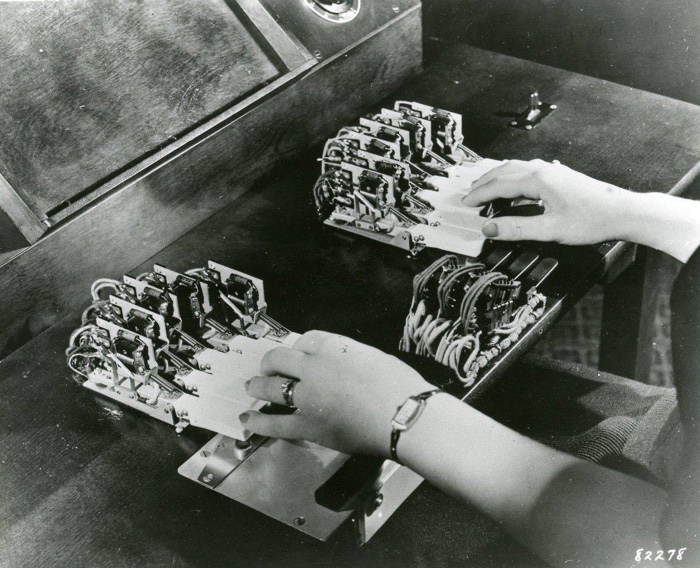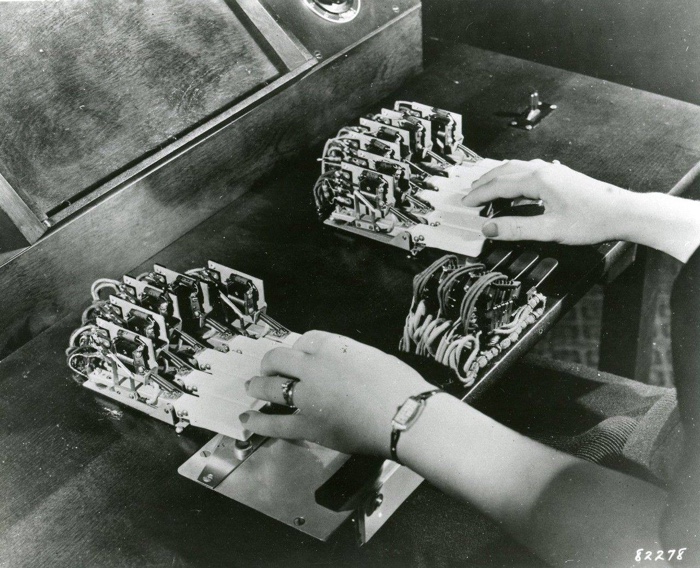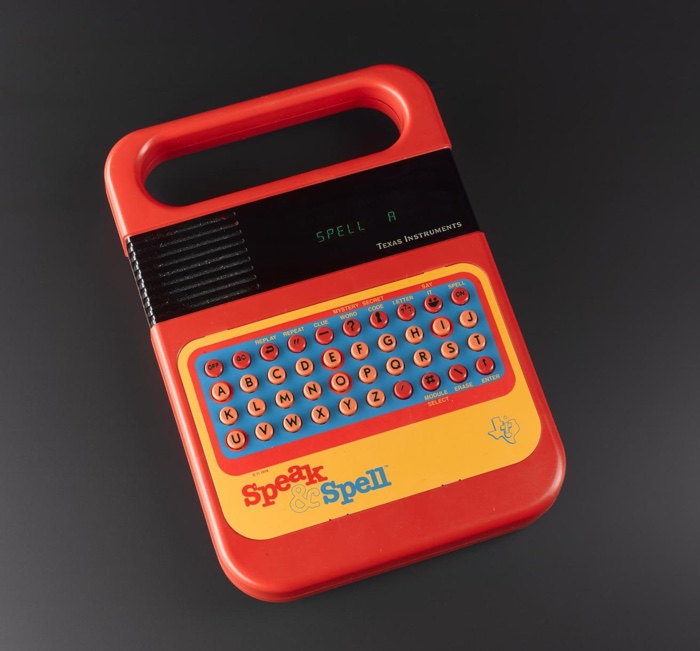Vox ex Machina. A Cultural History of Talking Machines, by Sarah A. Bell, a scholar, writer, teacher and currently an Associate Professor at Michigan Technological University. Published by MIT Press in open access.
Vox ex Machina analyses the quest to engineer electronic machines that simulate the human voice. In the book, Sarah A. Bell charts the development of a selection of voice synthesisers launched across the twentieth century, investigating their limitations, considering the implications of adopting a technology that apes the human voice and drawing parallels with current synthesised voices used as home assistants or as prosthetics.
The author also analysed some of the media coverage of specific voice synthesis products. The research reveals that there have always been people who perceived a talking machine as a step toward the automation –or even the substitution– of human beings. An article in Redbook magazine in 1955, for example, cited experts who worried that marriage rates might decline if “many functions of the wife are being usurped by machines.”
Hands of a “Voderette” demonstrating how to use the Voder
The Voder, 1939. The world’s first electronic voice synthesizer
Bell’s investigation of voice synthesisers shows that the machines developed over the past decades were already fraught with the same ethical and practical problems that today’s voice interfaces present. Her chapter about Voder, for example, reveals that issues such as “black boxing” of technology and concealment of the human cognitive labor are nothing new. Voder, a talking information machine debuted in 1939, not only presaged the tens of thousands of female information workers who would be displaced by new information technologies in the decades to come, but it was also presented as an engineering masterpiece that broke down human speech into its acoustic components. Instead of making work easier for its users, however, Voder required intensive cognitive work from female workers. Voder operators in training received one-on-one instruction and practiced for six thirty-minute sessions per day. It took them about six months to learn to form all the sounds, and another six months for them to develop the necessary technique for the speech to be intelligible.
Speak & Spell electrical toy made by Texas Instruments, 1978 (photo)
Bell believes that, even today, synthesised voices are fundamentally limited in their ability to simulate expressive human communication. One of their most blatant flaws is the absence of embodiment: talking machines do not experience the multilayered embodied and cultural interactions that give rise to the wide spectrum of human feelings, personalities and emotions. Besides, she explains, talking machines understand and use language in fundamentally different ways from humans. We modulate language and voice to try and reach mutual understanding. Machines are sonically repetitive and are limited by the assumptions embedded in the language model they have been programmed with. With the wide deployment of these technologies, we lose exposure to the vocal diversity and expressiveness of other human beings and risk losing some of our capacity for benefiting from social interactions with other people.
Problems such as children learning that it is OK to swear at voice assistants or the endurance of gender stereotypes through the exposure to female-sounding voice assistants, can be ironed out. What worries the author, however, is that a synthesised voice sustains the illusion that corporate informational interactions are interpersonal ones. Siri is not a social companion driven by empathy and congeniality. Changing the sound of its voice from female to male or vice versa will not change the fact that a smart home assistant is the “voice” of a US-based technology corporation which main objectives consist of increasing its profit margins and gaining power through the massive amount of information that the device collects.
Over the past few years, technological solutionism has tried to convince us that AI-driven conversational voice interactions are a quick fix for labour shortages in assistive care and mental health care, for companionship that will solve the problem of loneliness and for customer assistance in retail environments. Whether or not these promises are kept, the history of voice synthesis suggests that the pervasive, unregulated deployment of these technologies will be left in the hands of corporations whose values often do not align with the good of all society.
Vox ex Machina. A Cultural History of Talking Machines is a fascinating book. It is informative, well-researched and full of anecdotes. It is, however, sometimes a bit nerdy. I sometimes got lost in the technological details or in the minute descriptions of works of popular culture that attempted to make sense of the deployment of voice synthesising technology.


